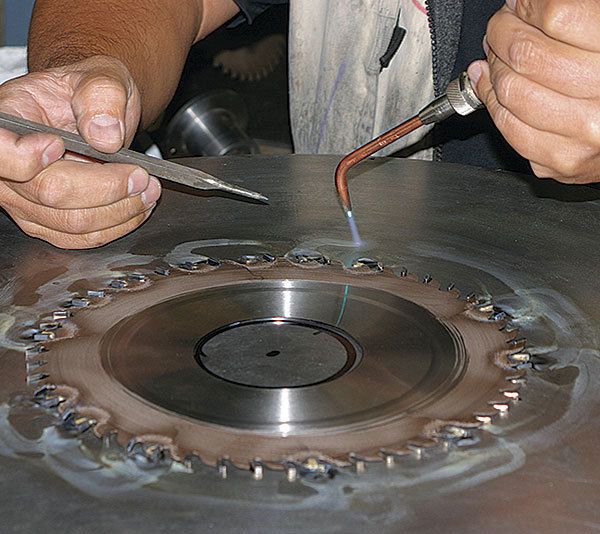Not all Carbide is Created Equal
The hardest man-made material has revolutionized woodworking, but quality varies
Synopsis: Invented in Germany in the 1920s, tungsten carbide is a dense, hard, wear-resistant material that now is everywhere from giant mining tools to the rolling ball of your pen. In woodworking, it has revolutionized sawblades and router bits, increasing exponentially the length of time between sharpening.
It’s easy to take those carbide tips for granted, but that would be a mistake. There’s a lot of technology in each tip.
From Fine Woodworking # 202
“Get used to honing your bits each time you use them, as dull ones tend to chip, splinter, and burn the work.”
This advice, from the first issue of Fine Woodworking, is a reminder that some things have gotten a lot easier over the last 30 years.
The author was referring to steel router bits, and the reason this advice is no longer needed is summed up in one word: carbide. Invented in Germany in the 1920s, tungsten carbide is a dense, hard, wear-resistant material that now is everywhere from giant mining tools to the rolling ball of your pen. In woodworking, it has revolutionized sawblades and router bits, increasing exponentially the length of time between sharpening.
It’s easy to take those carbide tips for granted, but after doing some research I’ve gained a new respect for them. There’s a lot of technology in each tip.
Unfortunately, not all carbide is created equal, and there is no national or international standard for well over 5,000 different carbide grades. But there are ways to increase your chances of buying tools with premium-quality carbide. I also learned how to prolong the life of carbide-tipped blades and bits, and how to tell when they do need sharpening.
Carbide varies by quality and type: Tungsten carbide is the hardest man-made material known, with wear resistance about 100 times that of steel. In addition, it has 2 1⁄2 times the rigidity of steel, is dimensionally stable, retains its hardness at high heat, and has an impact resistance similar to hard tool steels. In short, it is pretty amazing stuff.
You may have seen tool makers refer to their carbide as being C1, C2, etc. These grades, originally developed for classifying carbide by its ability to cut metal (they run from C1 to C19), are defined not by its chemical makeup, which can vary widely, but by the style of work it can do. C3 is defined as finishing, C4 as precision, for example, but there is no agreement on what this means. Like steel makers, carbide manufacturers face a trade-off between toughness (the ability to resist fracture), and hardness (wear resistance). There are two main ways to vary the properties of carbide: the size of the grain and the percentage of binder mixed in.
For the full article, download the PDF below:
Fine Woodworking Recommended Products

Festool Cleantec CT 26 E HEPA Dust Extractor

Ridgid EB4424 Oscillating Spindle/Belt Sander

Craftsman Random Orbit Sander























Log in or create an account to post a comment.
Sign up Log in